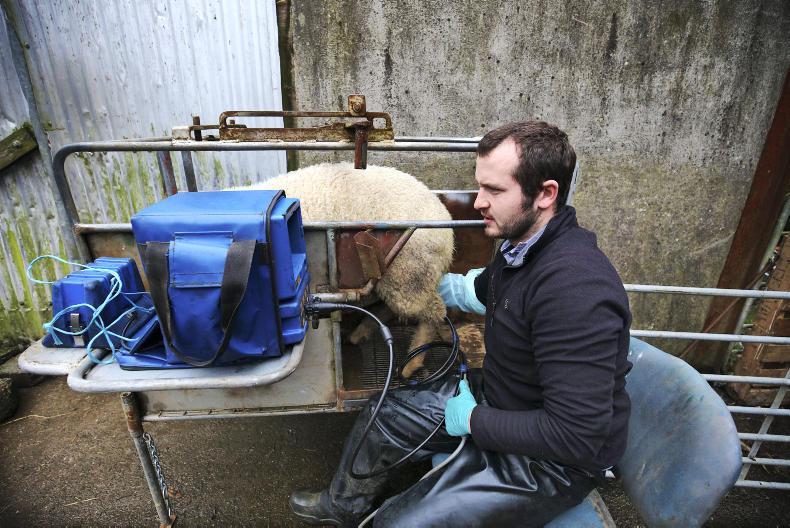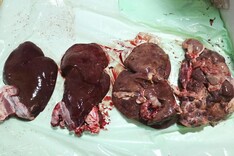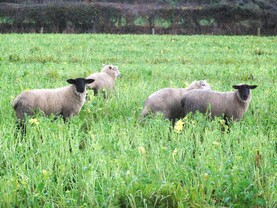Scanning of mid-season lambing flocks shows litter sizes are down by as much as 10% to 15% on last year.
Scanners are reporting much more variability in scanning results than in recent years.
Some flocks are experiencing 2% to 4% higher barren rates, which is also contributing to a lower scanned litter size. Litter size is reported as being down by as much as 10% to 15% in the worst affected cases, with the average reduction less than 5%. The worst-affected farms are typically those on more marginal land or where sheep have been under greater nutritional stress in the run-up to, or during breeding.
On some, breeding coincided with very heavy rainfall and lower grass dry matter, which limited ewe intake and liveweight gain and in turn breeding performance.
There are more scanners reporting such cases in western and northern regions, but there is significant variation within regions, with a high percentage of farmers who have consistently scanned 1.8 to two lambs per ewe achieving similar results to previous years.
Teagasc sheep specialist Ciaran Lynch said the winter has been very hard on outwintered flocks.
“The important message that we are telling farmers is to act fast and check the condition of ewes. At particular risk are ewes that were maybe falling behind target at breeding and those carrying multiple lambs,” said Lynch.
“It is these ewes that are more vulnerable to metabolic diseases and it is vital that farmers segregate and feed ewes according to condition and litter size”.
Scanners are also noting ewes showing clinical symptoms of heavy liver fluke infestation.
Read more
Late pregnancy nutrition –the foundation to flock profitability
Schmallenberg virus appearing in sheep flocks
Scanning of mid-season lambing flocks shows litter sizes are down by as much as 10% to 15% on last year.
Scanners are reporting much more variability in scanning results than in recent years.
Some flocks are experiencing 2% to 4% higher barren rates, which is also contributing to a lower scanned litter size. Litter size is reported as being down by as much as 10% to 15% in the worst affected cases, with the average reduction less than 5%. The worst-affected farms are typically those on more marginal land or where sheep have been under greater nutritional stress in the run-up to, or during breeding.
On some, breeding coincided with very heavy rainfall and lower grass dry matter, which limited ewe intake and liveweight gain and in turn breeding performance.
There are more scanners reporting such cases in western and northern regions, but there is significant variation within regions, with a high percentage of farmers who have consistently scanned 1.8 to two lambs per ewe achieving similar results to previous years.
Teagasc sheep specialist Ciaran Lynch said the winter has been very hard on outwintered flocks.
“The important message that we are telling farmers is to act fast and check the condition of ewes. At particular risk are ewes that were maybe falling behind target at breeding and those carrying multiple lambs,” said Lynch.
“It is these ewes that are more vulnerable to metabolic diseases and it is vital that farmers segregate and feed ewes according to condition and litter size”.
Scanners are also noting ewes showing clinical symptoms of heavy liver fluke infestation.
Read more
Late pregnancy nutrition –the foundation to flock profitability
Schmallenberg virus appearing in sheep flocks






 This is a subscriber-only article
This is a subscriber-only article










SHARING OPTIONS: